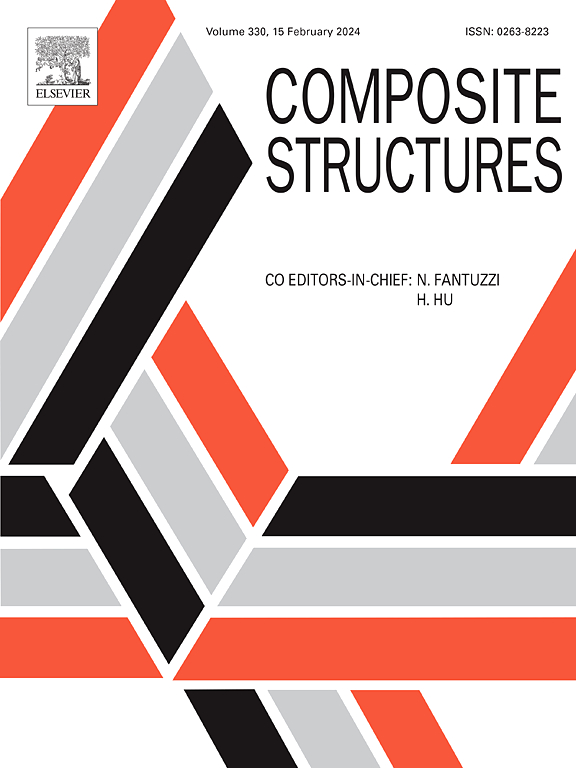Progressive failure modelling of Type IV composite overwrapped pressure vessels for compressed natural gas (CNG) storage
IF 7.1
2区 材料科学
Q1 MATERIALS SCIENCE, COMPOSITES
引用次数: 0
Abstract
Type IV composite overwrapped pressure vessels (COPVs) are widely used for compressed natural gas (CNG) storage. This study improves burst pressure prediction using a progressive damage model that accounts for fibre angle and thickness variations in the dome, key effects from filament winding, often overlooked in conventional models. These variations significantly influence stress and failure behaviour. The proposed composite formulation was first validated against results from commercial software, showing strong agreement in stress, fibre orientation, and thickness predictions. Further verification was conducted by comparing with the GFRP and CFRP actual prototypes. The numerically predicted burst pressures were 29.4 MPa and 27.7 MPa, respectively, closely matching the experimental results (29.39 MPa and 27.04 MPa), with deviations under 2.4 %. These results demonstrate the high accuracy and robustness of the model, supporting its application in the design, optimisation, and safety assessment of high-performance composite pressure vessels.
压缩天然气(CNG)储存用IV型复合材料包覆压力容器的渐进失效模型
IV型复合包覆压力容器(copv)广泛用于压缩天然气(CNG)的储存。该研究利用累进损伤模型改进了爆破压力预测,该模型考虑了纤维角度和纤维厚度的变化,以及纤维缠绕的关键影响,这些在传统模型中经常被忽视。这些变化显著影响应力和失效行为。首先根据商业软件的结果验证了所提出的复合配方,在应力、纤维取向和厚度预测方面显示出很强的一致性。通过GFRP和CFRP实际样机的对比进一步验证。数值预测爆破压力分别为29.4 MPa和27.7 MPa,与实验结果(29.39 MPa和27.04 MPa)吻合较好,误差在2.4%以内。结果表明,该模型具有较高的精度和鲁棒性,可用于高性能复合材料压力容器的设计、优化和安全评估。
本文章由计算机程序翻译,如有差异,请以英文原文为准。
求助全文
约1分钟内获得全文
求助全文
来源期刊

Composite Structures
工程技术-材料科学:复合
CiteScore
12.00
自引率
12.70%
发文量
1246
审稿时长
78 days
期刊介绍:
The past few decades have seen outstanding advances in the use of composite materials in structural applications. There can be little doubt that, within engineering circles, composites have revolutionised traditional design concepts and made possible an unparalleled range of new and exciting possibilities as viable materials for construction. Composite Structures, an International Journal, disseminates knowledge between users, manufacturers, designers and researchers involved in structures or structural components manufactured using composite materials.
The journal publishes papers which contribute to knowledge in the use of composite materials in engineering structures. Papers deal with design, research and development studies, experimental investigations, theoretical analysis and fabrication techniques relevant to the application of composites in load-bearing components for assemblies, ranging from individual components such as plates and shells to complete composite structures.
 求助内容:
求助内容: 应助结果提醒方式:
应助结果提醒方式:


